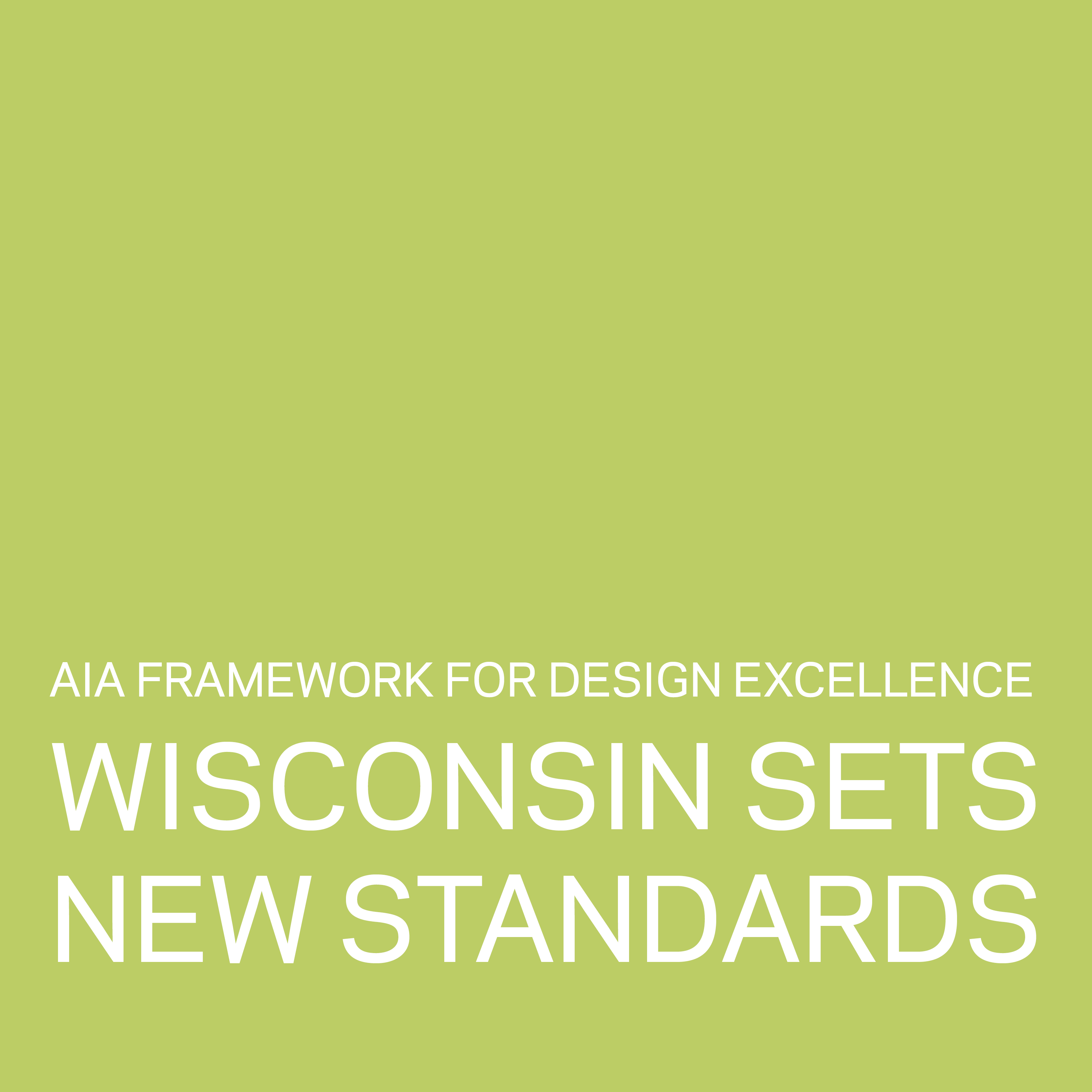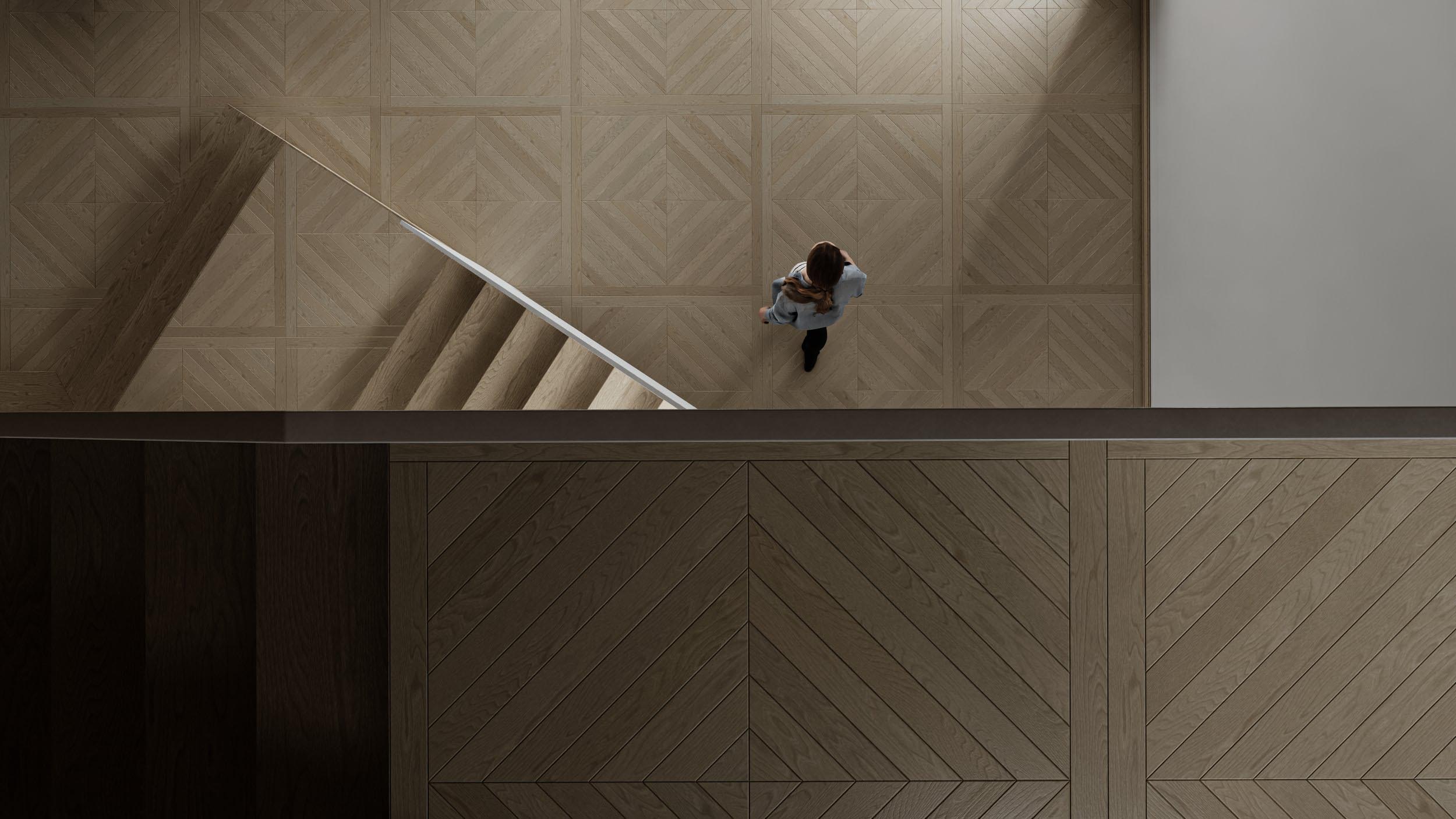Table Of Content
- Committee on the Environment
- Design for Resources—Framework for Design Excellence
- Design for Resources toolkit
- Defining Design Excellence: Measure 10 Design for Discovery - Begin with Discovery
- Design for Economy—Framework for Design Excellence
- Design for Change toolkit
- Young Architects Award 2024
- Design excellence is sustainable, resilient, & inclusive design

Building design can combat the predilection for physical inactivity and promote healthier behaviors, but it shouldn’t do so at the expense of inclusive design. Thermal comfort is the perception of satisfaction with the thermal environment and is subjectively evaluated. However, the lack of thermal satisfaction negatively impacts productivity and health, so designing for thermal comfort yields multiple benefits for occupants.
Committee on the Environment
Improving indoor air quality requires a multifaceted approach that provides high-quality outdoor air while minimizing the intrusion of dirt, particles, and other pollutants in built spaces. The thoroughly researched, up-to-date Integration at Its Finest guide for the U.S. General Services Administration takes a deep dive into three different COTE award recipients. It includes a comparative analysis across several categories found in high-performance buildings. The Discovery Center project was designed for disassembly with wood panels and trusses that were unfinished and mechanically fastened.
Design for Resources—Framework for Design Excellence
Along with several of our peer Chapters, AIA Philadelphia and AIA Pennsylvania have taken the lead on incorporating the Framework into our Design Awards program over the last five years. As part of that program, we developed the Sustainability Framework Form as a concise way to address the Ten Measures with simple yes/no questions and selective project data. Architects for the Austin Central Library looked at adding revenue-generating spaces in the programming phase.
Design for Resources toolkit
ATFP compliance means that the building can be reoccupied by the Navy if needed. Passive systems, daylighting, and a backup generator serving the central part of the building allow for three days of operations. An adaptive reuse project that focused on using salvaged materials and avoiding finishes wherever possible to reduce the projects’ embodied energy. The framework represents the defining characteristics of design excellence and challenges architects and designers with a vision of what the profession strives to achieve.
Defining Design Excellence: Measure 10 Design for Discovery - Begin with Discovery
More than two decades of COTE® Top Ten award recipients and their case studies can be accessed online. Use these projects for inspiration of what sustainable design can be and how teams use big ideas to bring together excellence across principles. AIA is building a culture of equity, diversity, and inclusion within our profession, firms, and chapters. Explore guides, resources, and education to help you make the business, professional, and ethical cases for equity in architecture and practice. The world is changing in ways that continuously challenge our health, safety, and wellbeing. How AIA defines and celebrates design excellence sets the standard for how the architecture profession works together to design a better world.

Design for Economy—Framework for Design Excellence
As a member of the AIA Committee on the Environment Advisory Group, Corey is a lead author of the COTE Top Ten Toolkit, a resource that’s helping to redefine design excellence for the built environment. Starting a design process with discovery means seeking out the buildings that have faced similar challenges, whose designers faced similar decisions, and visiting them to see the results of those choices. There is a literal city of knowledge surrounding us at all times and the architecture profession could reap real benefits by engaging existing buildings during the design process. Discover the defining 10 principles of design excellence for the 21st century.
Design for Change toolkit
A number of options are available in a range of sizes, including options for the number of bedrooms and bathrooms, with a provision for a studio apartment in the back of the house or the possibility of a party wall configuration. The Renwick Gallery is a great example of the adaptability of an existing building. The project provided historically sensitive upgrades to the structural system to allow 40 tons of new static load in the Grand Salon for future art exhibits. Passive survivability refers to a building’s ability, or components of the structure, to maintain essential functions and withstand damage after a disaster event whether natural or man-made. Good design is adaptable, resilient, and flexible to change over time—reducing the building’s risk and vulnerability and enhancing its usability, functionality, and value. Among many other topics including indoor air quality and natural light, the Kendeda Building project also ensures that no materials from ILFI’s Red List were permitted in the project.

Young Architects Award 2024
MIT.nano receives American Institute of Architects's Top Ten Award for sustainable design - MIT News
MIT.nano receives American Institute of Architects's Top Ten Award for sustainable design.
Posted: Fri, 16 Jul 2021 07:00:00 GMT [source]
For example, when selecting a roof system, consider systems that have synergistic benefits such as stormwater retention (blue roofs), heat island reduction, or biophilia (green roofs). The whole is greater than the sum of its parts in architecture and value engineering. The AIA Framework for Design Excellence represents the defining principles of design excellence in the 21st century. Comprised of 10 principles and accompanied by searching questions, the framework informs progress toward a zero-carbon, healthy, just, resilient, and equitable built environment. He led sustainability efforts at two AIA Firm Award-winning firms and is currently splitting his time between Positive Energy, a human-outcome focused mechanical engineering firm and Dept. of Sustainability, his sustainability strategy consultancy.
Design excellence is sustainable, resilient, & inclusive design
Research local, state, and national incentives, grants, and financing options to justify long-term investments to improve performance. Examples include energy-cost payback, water savings, measured productivity gains, property-assessed clean energy (PACE), third-party power purchase agreements (PPA), and more. The greatest test of economy is how the building performs over the entire life cycle. Designing for optimal building performance in energy, water, and waste decreases the operational costs of a building. Decreasing operational costs does not always require a higher upfront investment; if it does, this cost can often be reclaimed as a “net-positive” transaction within a reasonable payback period. Consider reusing an existing building or renovating it before deciding to build new construction.
Reuse has the largest impact on reducing embodied carbon and preserves resources for the future. Reuse, and especially preservation, keeps more labor in the local economy and supports highly skilled labor. At the intersection of zero-carbon, resilience, equity, and health, the electrification of buildings can positively impact human well-being at multiple scales.
Access to natural light is a fundamental feature of design excellence, and optimizing daylight significantly improves health and wellness for occupants. Electric lighting and mechanical ventilation allow for deep floor slabs that push occupants further away from the outside world; this separation from daylight causes direct negative impacts on mental and physical health. As individuals, we intake information through our senses, creating awareness (perception) and then processing that information into our understanding (cognition). The more senses we connect with, the more firmly we can experience a space and become attached to it. The more people attached to the building or place, the more likely the building will be celebrated and preserved over time. For example, most metals and some plastics, being technological nutrients, can be reconstituted into a new product with similar characteristics.
The Framework helps us consider how buildings work for people, including residents, occupants and users, as well as the local communities and environment. Also consider resilient design and life cycle thinking by evaluating the site location and its relationship to observed and foreseeable hazards. Placing a well-designed building in the wrong location can waste economic resources and place lives and investments in danger.
On the building scale, removing gas appliances can significantly improve indoor air quality. Switching from a gas to an electric stove prevents pollutants from being inhaled as there is no combustion. At the community scale, fossil fuel plants create pollutants, such as mercury, sulfur dioxide, ozone, and particulate matter, that can cause long-term lung and heart issues as well as cancer, immune system disorders, and premature death. More often than not, low-income, minority, and Indigenous communities live closest to fossil fuel plants and are unfairly burdened with these harmful health and environmental effects.
AIA Honors & Awards celebrate the best buildings, spaces, and the people behind them, with some of the most prestigious distinctions in the architecture industry. Good design applies lessons learned from previous projects to refine the design process. This marked the 14th consecutive month of declining billings at firms as inflation, supply chain issues, and other economic challenges continue to affect business. While inquiries into new projects have continued to grow during that period, it has been at a slower pace than in 2021 and 2022. More notably, the value of new signed design contracts was flat in March, which has generally been the trend for the last year and a half. This shows that clients are interested in starting new projects but remain hesitant to sign a contract and officially commit to those projects.

No comments:
Post a Comment